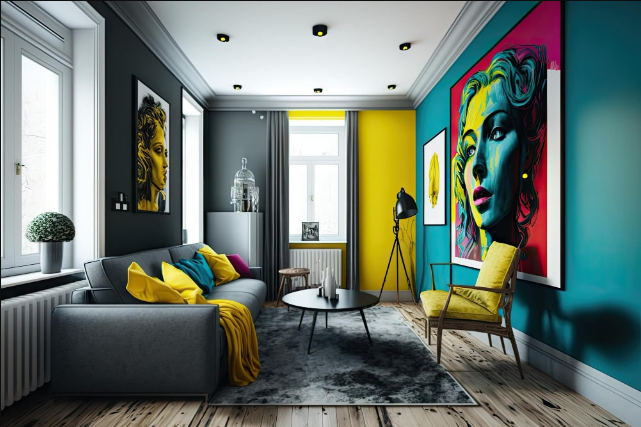Ever wondered what makes a house feel like home? The answer often lies in the magic of interior design – a craft that combines aesthetics, functionality, and personal touch to create spaces that are not just beautiful but also reflect the essence of those who inhabit them. This article unfolds the secrets of interior design, offering a deep dive into its principles, trends, and the transformative power it holds over our living spaces.
The Essence of Interior Design
Interior design is far more than just arranging furniture aesthetically in a room. It’s about creating environments that enhance the quality of life and culture of the occupants. The essence of interior design lies in its ability to evoke emotions, create functionalities, and embody the personal tastes and experiences of individuals. Through a blend of art and science, designers craft spaces that are not only visually appealing but also practical and sustainable.
Transforming Spaces: Before and After
The power of a makeover in interior design can be truly astonishing. It’s about seeing potential where others see a challenge. Transforming a space is not just about new furniture or a fresh coat of paint; it’s about reimagining how a space can be used to its fullest potential. Before-and-after scenarios in interior design showcase the dramatic impact that thoughtful design can have, turning overlooked spaces into areas of beauty and purpose.
Principles of Design: A Foundation for Creativity
Balance and Harmony
Achieving balance and harmony is crucial in interior design. This involves the thoughtful arrangement of elements to create a space that feels stable and aesthetically pleasing. Whether through symmetry or asymmetry, the goal is to distribute visual weight in a way that feels natural and inviting.
Color and Light
Color and light are pivotal in setting the mood of a room. The right combination can make a space feel cozy, spacious, or vibrant. Understanding color theory and lighting techniques allows designers to manipulate spaces to achieve desired emotional and functional outcomes.
Trends in Interior Design
Sustainable and Eco-Friendly Designs
The trend towards sustainability and eco-friendliness in interior design reflects a growing awareness of environmental issues. This includes the use of sustainable materials, energy-efficient lighting, and designs that minimize waste and encourage recycling.
Smart Homes and Technological Integration
Technology has become an integral part of modern interior design. Smart homes feature automated systems for lighting, heating, and security, making spaces not only more comfortable but also more energy-efficient.
Color Theory in Interior Design’s
Choosing the right color palette is a fundamental aspect of interior design. Colors can influence mood, alter perceptions of space, and establish harmony. Designers use color theory to select hues that complement the function and feel of a room, creating cohesive and appealing interiors.
Space Planning: Maximizing Functionality
Effective space planning is essential for maximizing functionality and comfort. The strategic placement of furniture and the thoughtful consideration of layout can transform how a space is used, enhancing its utility and appeal.
Textiles and Materials: Adding Texture and Depth
The choice of textiles and materials is critical in adding texture, depth, and character to a space. From soft furnishings to hard surfaces, these elements play a key role in defining the tactile and visual experience of an interior.
For more helpful tips, check out the rest of our site today!

